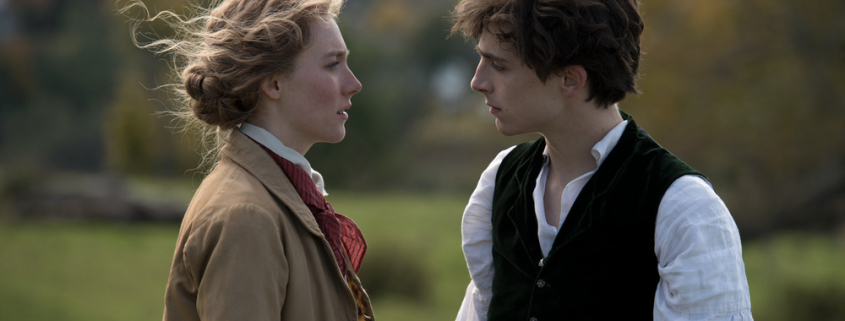Fan-Them Diaries: The disappointing fate of 19th century heroines

As required viewing for this column, Greta Gerwig’s 2019 adaptation of “Little Women” adds the nuances of what was previously a simple footnote in the text regarding the less than spectacular ending of the penultimate chapter, titled “Under the Umbrella.”
Just in case you didn’t get the memo before picking up today’s paper, let me explain. Our beautiful heroine, Josephine March — or Jo — goes all 200-something pages of the novel talking about how she would not be fit for marriage. In fact, she desires to be alone and independent, but ends up falling for a 40-year-old German professor whom she ends up kissing, you guessed it, under the umbrella.
At the end of the original novel, Jo goes against the character growth and persona that author Louisa May Alcott took so long to write out and ends up marrying the professor, Friedrich Bhaer, someone Jo regarded as a wise friend and not a lover until the very end of the novel. That ending begs a question: Why?
Well, it wasn’t Alcott’s choice. Like many other women in literature, especially at the time Alcott originally wrote “Little Women,” in order to be published, the female heroines of novels had to end up either married or well, dead.
Take “The Awakening” by Kate Chopin. The main character, Edna, tries to leave her typical role as a wife and mother to pursue her interests after discovering her passion for independence. However, unable to truly have independence, Edna is overcome by grief and drowns herself.
Or maybe you’ve heard this “happier” ending of “Jane Eyre,” a strong-willed youth who gets dulled down to a supporting character in her own life. This happens the second she falls for an older man, Rochester, and follows him with his plot to rid himself of his former wife.
You might be thinking, are you comparing fate or death to marriage? Well, yeah, because either fate is not what these women were destined to do. Spinsters were not rare in real life, but in books, these characters were often in the background, certainly not the beloved main character.
Instead, we see these women betray their dreams and fall for older men, which reinforces the idea that the only match for smart young women are older men. It’s not necessarily pedophilia since most of these characters are at least 19, but it does give me the ick when I read about star-crossed romances between people whose age gap is undeniably noticeable. This is not to shame age gaps, but to put a spotlight on a common trend in literature to use the “older man” trope to marry off women who would be better off alone.
The integrity of these characters were sacrificed in the name of being published, which may be a better outcome than not being published at all and having us live in a world without the million “Little Women” remakes, but it does call into question how these novels have affected generations of women who see themselves in these independent, out of the ordinary heroines, then feel a disconnect in the ending when they are married off.
We can’t obviously go back in time and force artists like Brontë and Alcott to revise their endings — or, in Alcott’s case, stick to the original ending — but what we can do is take after Gerwig’s approach to these stories and revise such horrid fates to be more fitting for the book lovers for which these heroines are meant to be.
So go on, revise these endings fellow writers or, for those who prefer other mediums, reimagine these endings as you see fit, because these heroines belong to us, not older men.
With conviction,
Myriam
Myriam Alcala is a rising junior writing about literature and popular culture in their column, “Fan-them Diaries.” They are also the arts and entertainment editor at the Daily Trojan.

